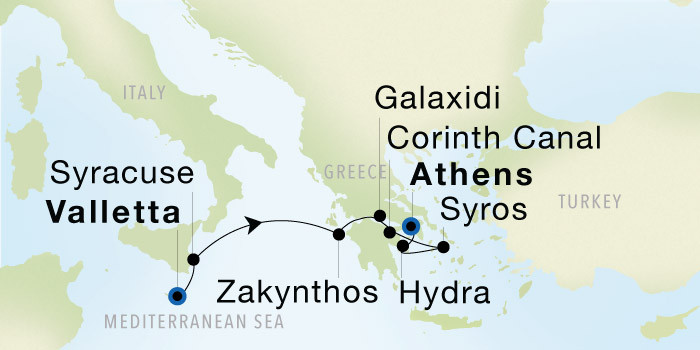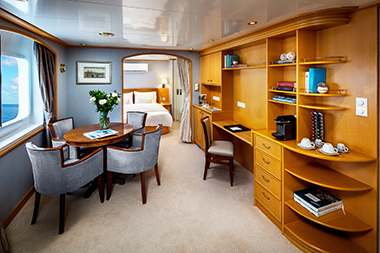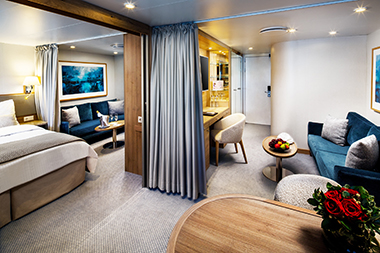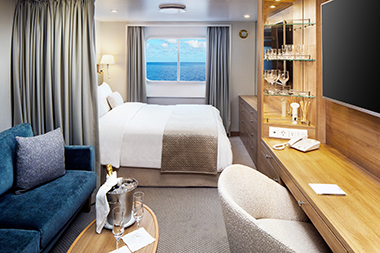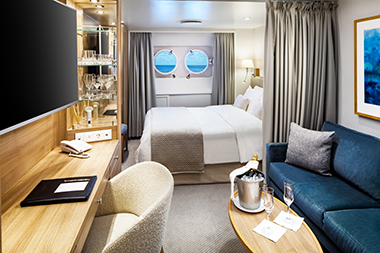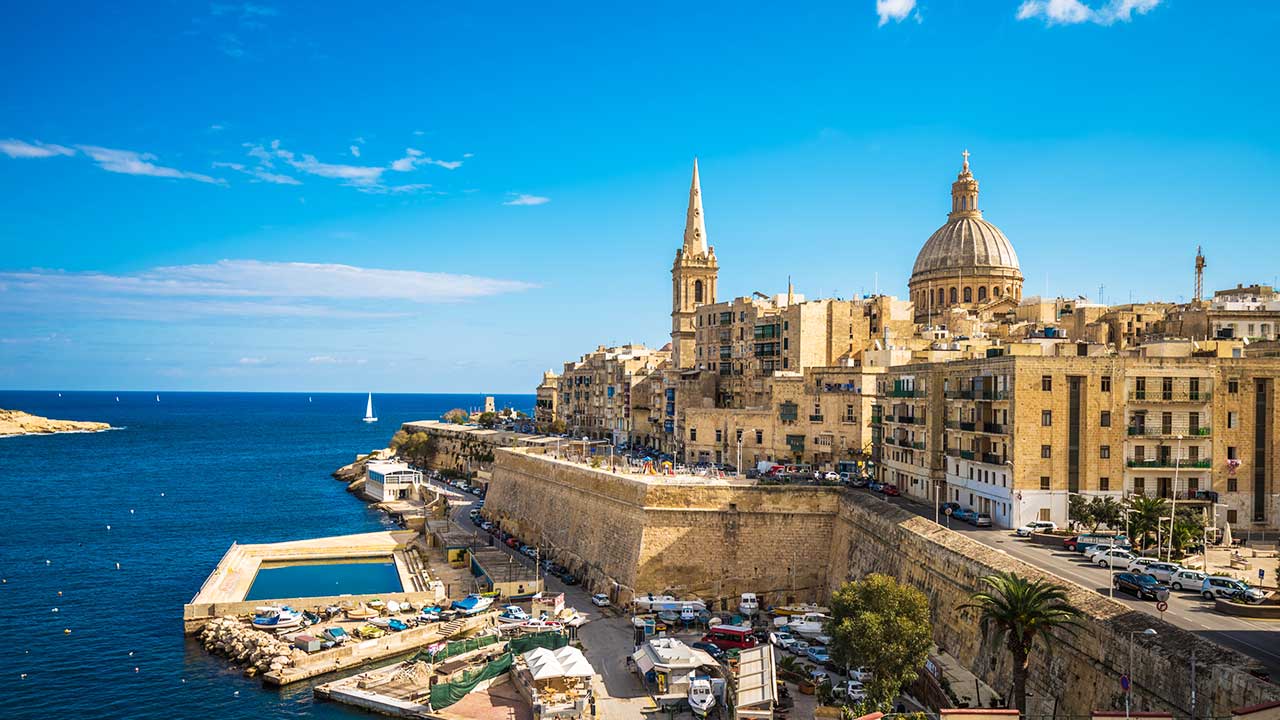
Established in the 1500s by the Knights of St. John, this fortified city on a hilly peninsula soars between two of the finest natural harbors in the Mediterranean. A UNESCO World Heritage site, Valletta is defined by its sites of historical significance, with architecture dating back to the 16th century. Valletta is a pleasant and charming city to stroll, with little vehicle traffic and lots of stories to be discovered around every corner.
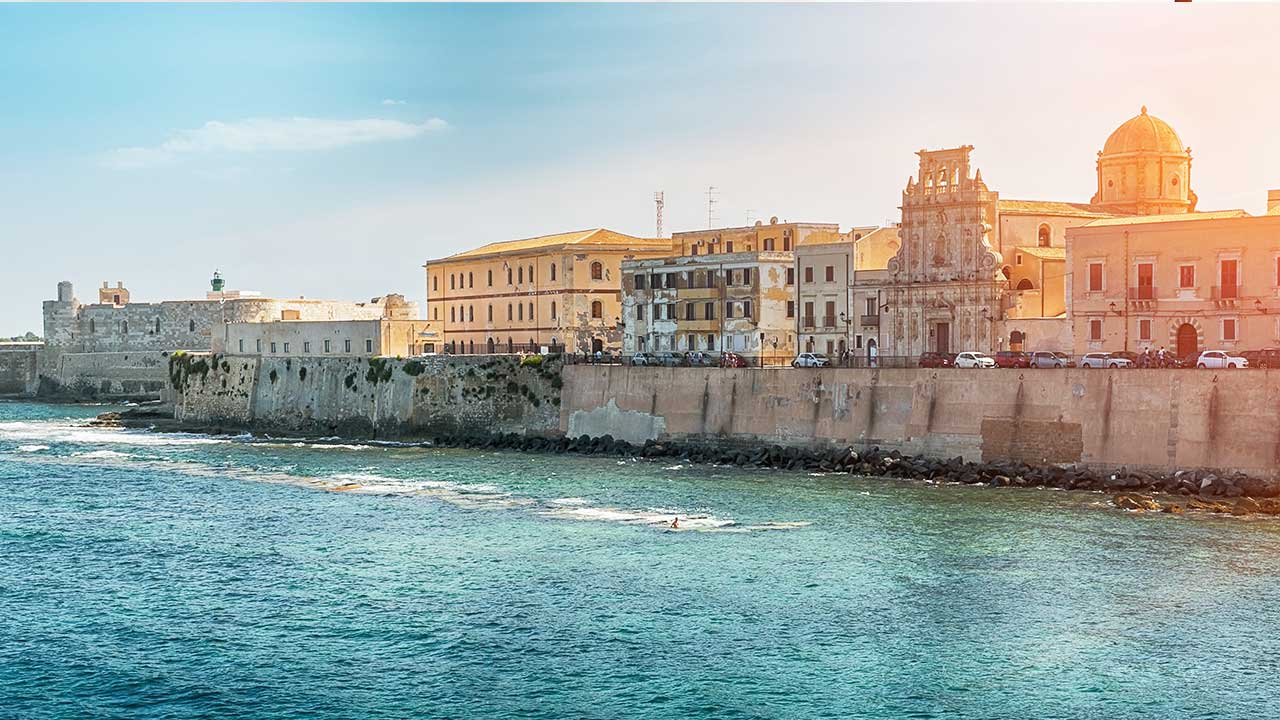
Syracuse sits nestled in the corner of the island of Sicily in the Ionian Sea. The birthplace of the celebrated mathematician and inventor Archimedes, the 2,700-year-old city played a key role in ancient times as a major power in the Mediterranean world. Once described by the Roman poet Cicero as “the greatest Greek city and the most beautiful of them all,” Syracuse is defined by its rich Greek and Roman history, culture, and architecture. The Archaeological Park Neapolis boasts the Roman Amphitheater, the Teatro Greco, and the Orecchio di Dionisio, a limestone cave that resembles the shape of a human ear. The Museo Archeologico Regionale Paolo Orsi displays terracotta artifacts, Roman portraits, and Old Testament scenes carved into white marble. Syracuse is your gateway to the UNESCO-awarded Baroque city of Noto and the Catacombs of San Giovanni.
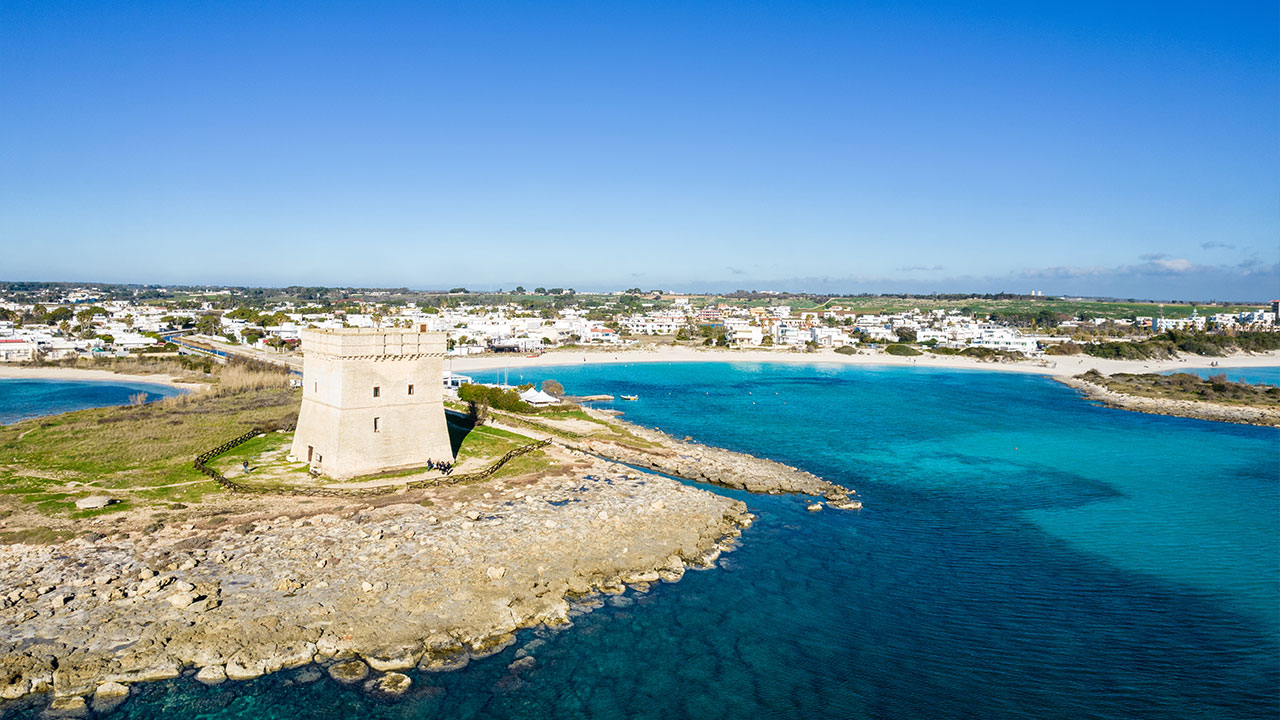
SeaDream yachts the Gulf of Squillace, a sheltered inlet along the Calabrian coast of Italy. It’s here that we plan to take full advantage of this breathtakingly beautiful area with Marina Days that invite you to swim, relax, or play with your choice of watersports toys in the tranquil azure waters of the Mediterranean. Slide into the sea on our new waterslide, the first and only on a cruise passenger vessel to take you from ship to sea. Swim and snorkel off your yacht, and enjoy complimentary catamarans, kayaks, paddleboards, jet skis, banana boats, and more.
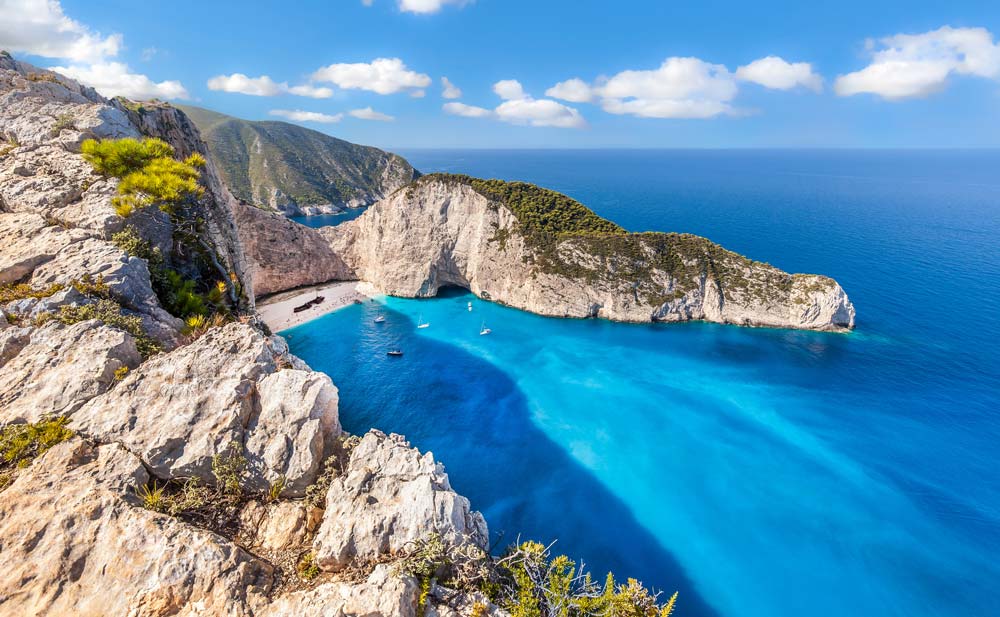
Nestled in the Ionian Sea, the island of Zakynthos is named after the son of a legendary Arcadian chief and a son of Zeus, Dardanus. The Venetians nicknamed the island “the Flower of the East,” as it boasts many beautiful beaches and rich vegetation with agricultural products such as citrus fruit, olive oil, grapes, and currants. As with other Greek islands, the culture and history of Zakynthos is extensive, dating to the Old Stone Age. Oldest mentions of the island date to the Mycenaean period, and ancient Greek poet Homer included Zakynthos in his famous works, The Odyssey and The Iliad. The island is well known as an iconic diving spot and for Navagio Beach, whose name comes from a famous shipwreck in 1980. Enjoy Porto Limnionas Beach, Blue Caves, Keri Caves, Turtle Island, Banana Beach, and the endangered Loggerhead Sea Turtle habitat in the Zakynthos Marine Park of Laganas Bay. A rich culinary tradition and wine culture can be found on the island: thicker sauces accompany dishes that incorporate more poultry and meat than other Greek cuisine. Comoutos Winery is one of the oldest running wineries, established in 1638, and the island’s most famous wine, Verdea, is one of the only two wines in Greece under the PGI Category. Guests are welcome to explore the Venetian castle on Bochali Hill, providing a panoramic view of Zakynthos Town; the Church of St. Nicholas, and St. Dionysios Cathedral.
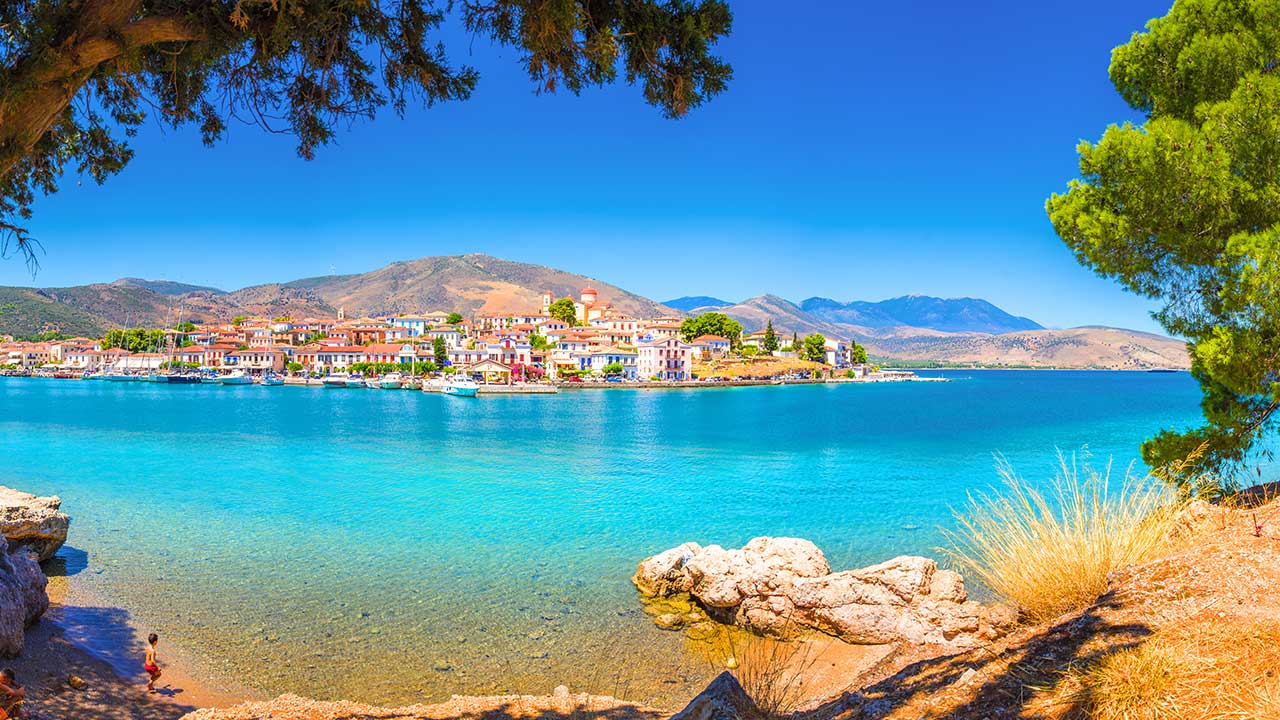
Galaxidi is a small village on the northern coast of the Corinth Golf lying west of Itea and 15 km southwest of Delphi. It allows excellent access to the incredible sight of Delphi which is within the top three archeological attractions in Greece and in 1987 was inscribed as a UNESCO Heritage Site. It is believed the Zeus wanted to find the center of the Earth so he sent two eagles flying from the eastern and western extremities and where they met was Delphi – becoming the “navel/center of the earth”. SeaDream has arranged the very best guides and vehicles from Athens to further enhance this incredible visit. Your guided visit highlights the ancient Sanctuary of Apollo, where Pythia, the celebrated Oracle dwelt, the Temple of Apollo, the Sacred Way, the amphitheater, the best-preserved stadium of Greece, and the Castalia Spring, where in ancient days the pilgrims had to wash before they were allowed to consult the Oracle. In the Delphi Museum, see such treasures as the Omphalos, which marked the center of the world, and the magnificent bronze Charioteer, one of the finest pieces surviving from the 5th century BC. After the museum, there will be free time to visit the village of Delphi. SeaDream has the option of docking along the small pier in Itea or anchoring off to provide water sports options. This is dependent on availability as well as a number of guests visiting the archeological site.
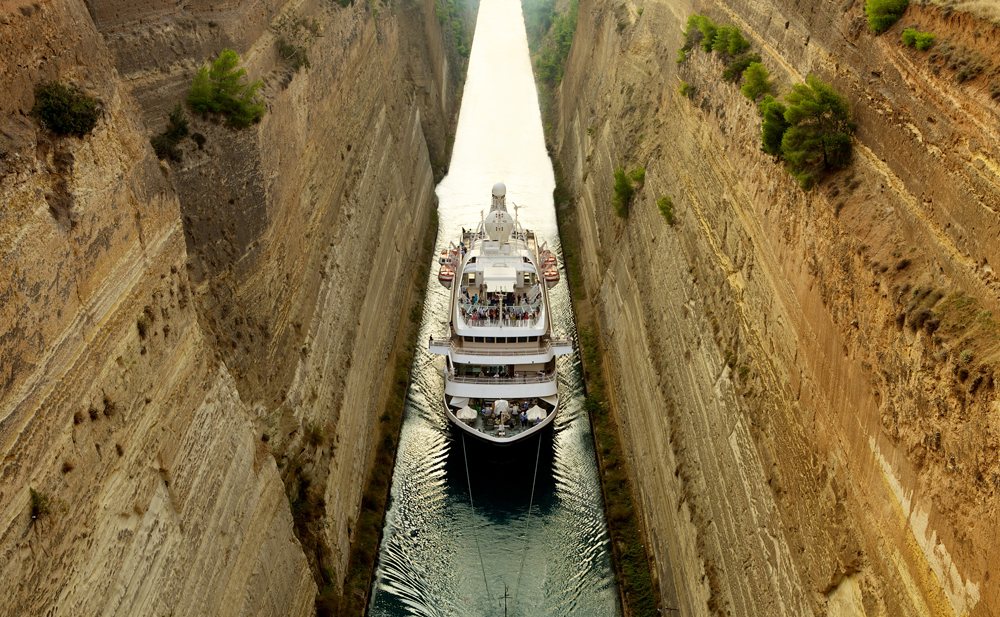
So narrow! So dramatic! You'll understand why SeaDream says "expect the unexpected" as your yacht transits the Corinth Canal. The canal was first completed in 1893, despite previous attempts from ancient times; the first plans being from 602BC. The Roman Emporer Nero actually started construction in 67AD, making the first cut himself with a golden pick. The canal we transit is 6.3 kilometres (3.9 mi) in length. Before the canal, ships sailing between the Aegean and the Adriatic had to circumnavigate the Peloponnese Peninsula adding about 185 nautical miles to their voyage.
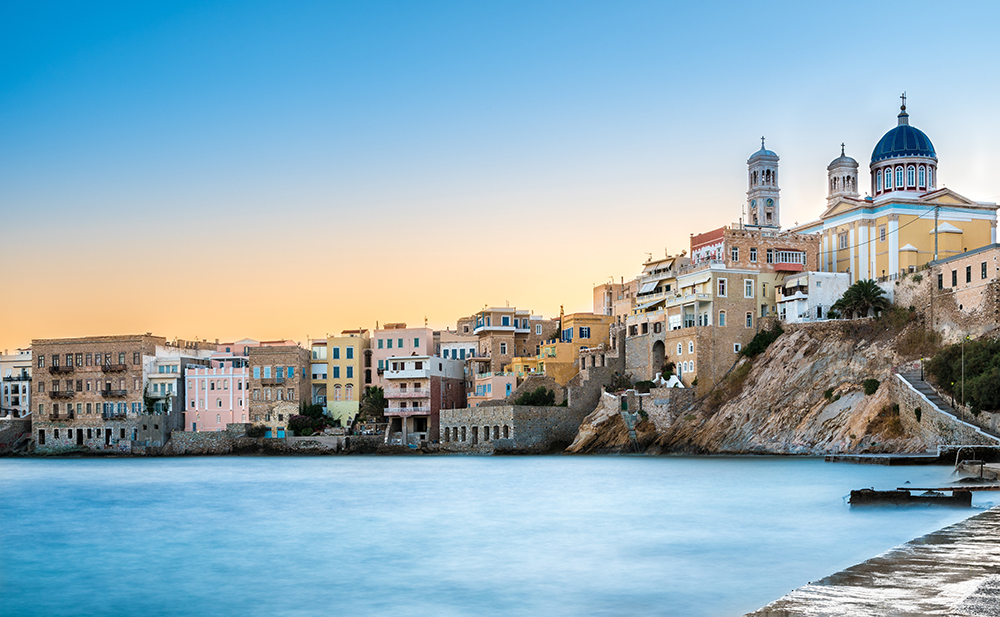
The small island of Syros offers the quintessential Greek island holiday experience without the crowds often found in the more well-known Greek Isles. With pristine blue waters, Syros’ breathtaking beaches are sure to impress. Kini, Vari, Azolimnos and Yalissás Beach are among its most famous options to bask in the sun. Beyond its beautiful beaches, Syros is part of the Cyclades, an island group in the Aegean Sea, and is filled with culture and history. The island is also commonly recognized for its Aegean cuisine which features several local specialties, making Syros a culinary destination.
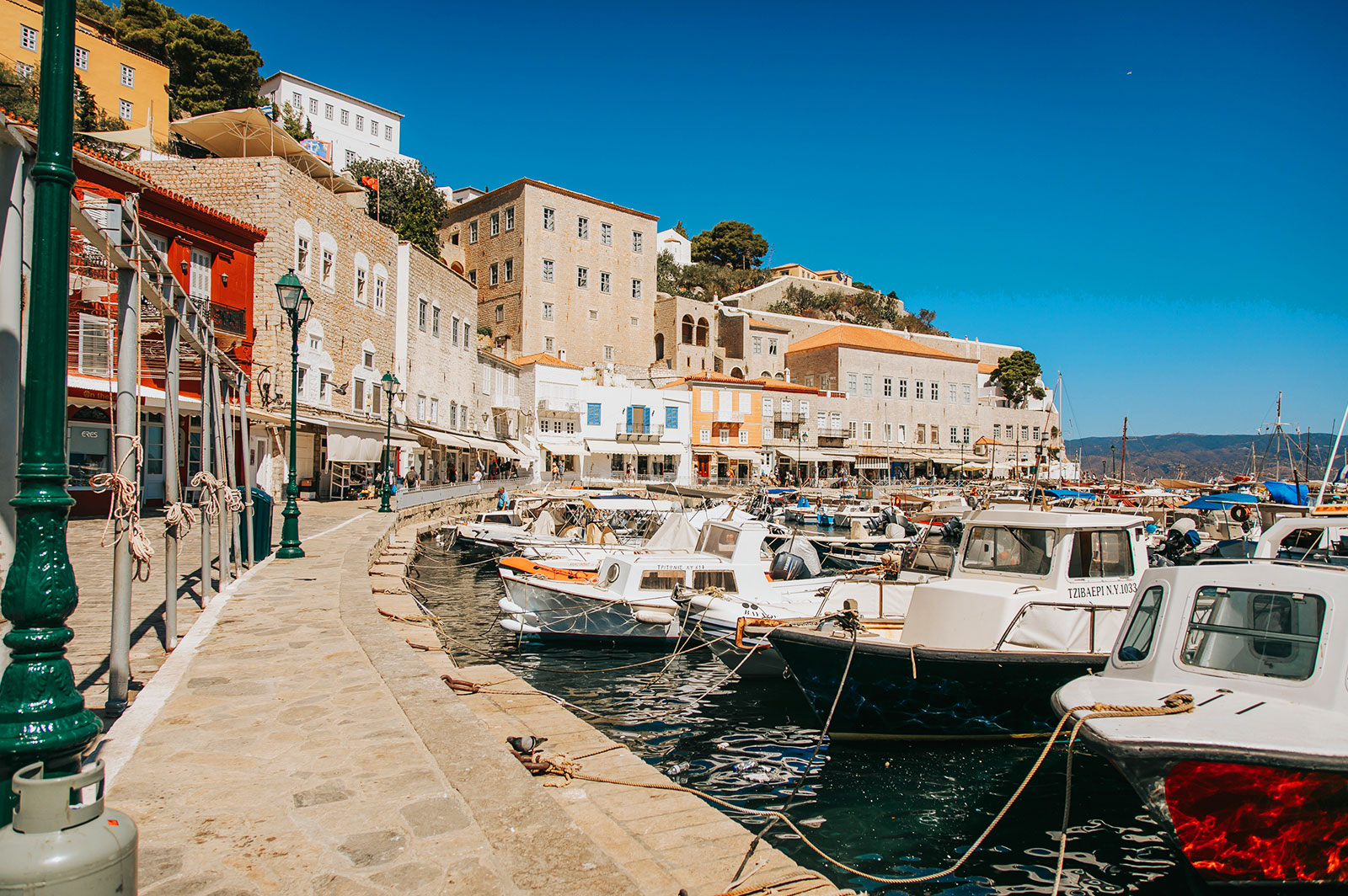
There is one main town on Hydra, known simply as "Hydra port". It consists of a crescent-shaped harbor, around which is centered a strand of restaurants, shops, markets, and galleries that cater to tourists and locals (Hydriots). Steep stone streets lead up and outwards from the harbor area. The charm of Hydra town certainly lies in her rich history, beautiful port and waterfront unspoiled by motorized vehicles. The island offers a rugged charm and some spectacular scenes and makes the perfect place for some self-exploration.
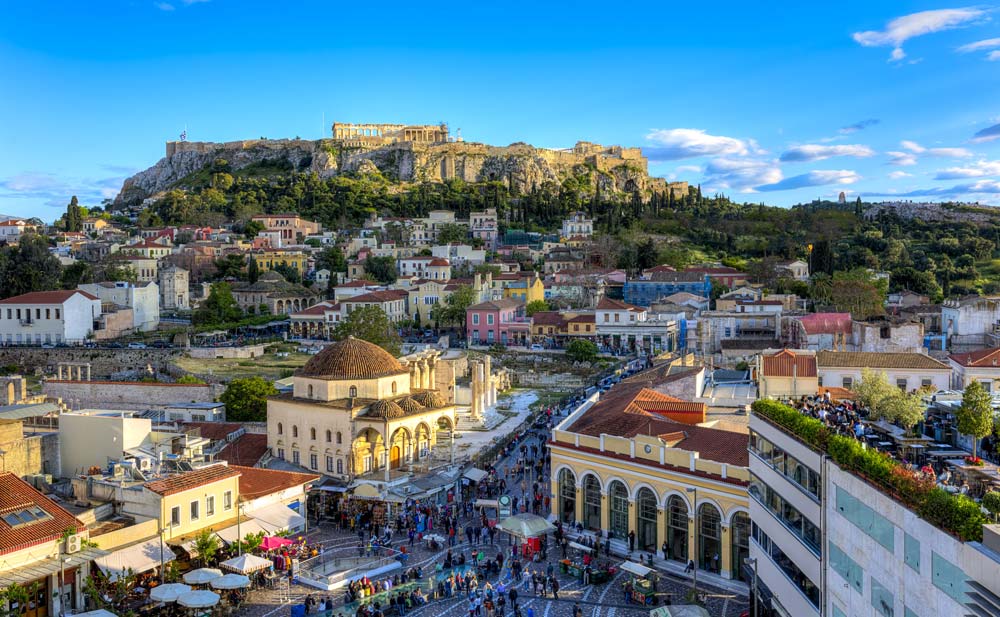
Piraeus, roughly translating to “the place over the passage”, is an important Greek port located within the Athens agglomeration, in the Attica Basin. It is 12 kilometers from the municipality of Athens, considered the fourth largest and is the third most populous amongst all the municipalities of Greece. Now a peninsula, Piraeus, originally a rocky island, was developed in early 5th Century B.C. when it was initially designated as Athens’ import and transit trade port. It is the largest marine-based shipping center of Greece, one of the largest ports in Europe, and considered the second largest passenger port in the world. Inhabited since the 26th Century, it wasn’t until the 6th Century B.C. that Piraeus began catching attention. The land of Piraeus was essentially impassable, flooded by the sea most of the year until centuries passed and the flooding ceased. By the 5th Century B.C. it became a navy base for the Athenian fleet for the natural harbors and the strategic potential they carried. Athenian general and politician Themistocles fortified Piraeus’ three harbors Kantharos, Zea and Munichia, created ship houses and completed his walls in 471 B.C., which led to the port becoming a great military and commercial harbor. There are many archaeological sites, points of interest and entertainment available in Piraeus. Most famous for its tavernas and cuisine, several popular events take place in Piraeus, such as the Ecocinema International Film Festival, the Maritime Festival, the Piraeus Rock Wave Festival and the Three Kings’ Way Festival. There are also many theaters, including the Municipal Theater, the open air Veakeio Theater, and the Menandreio Theater. Museums in Piraeus include the Archaeological Museum of Piraeus, the Merchant Shipping History Institute Exhibition, the Panos Aravantinos Decor Museum, the Georgios Averof Museum Ship and the Museum of Electric Railways. Be sure to catch the panoramic views available from the hill of Kastella, overlooking Athens and the Saronic Gulf!
Suites & Staterooms
*Single Supplement for this voyage is 200% for Yacht Club Deck 2, 3 and 4. For Commodore, Admiral and Owners Suite, a 200% single supplement rate applies.
Government, Port, Document Issuance, Handling & Service fees: $420 per guest (included)
Please Note: Fares are capacity controlled and may change without notice. The fares are per person based on double occupancy. Single and third person rates are also available. SeaDream Yacht Club strongly recommends that all guests purchase travel insurance.
Yachting Land Adventures & Activities
-
Zakynthos - Caretta-Caretta (Sea Turtle) Cruise
Description
Cruise from Zakynthos Island in the area where the famous Caretta-Caretta turtles live and visit where they lay their eggs in the sand. On this Yachting Land Adventure, you have the chance to admire the beautiful seascapes of the island from the sea. Board your coach from Zakynthos port for a 30-minute drive to the Agios Sostis pier. Here you will board the local boat to start your short cruise around the island of Zakynthos. Also, this cruise will visit the island of Marathonisi with gorgeous beaches and crystal-clear water. Marathonisi is also the island where the famous sea turtles Caretta Caretta go to lay their eggs in the sand. After visiting Marathonisi, the boat will head to the caves of Keri for a swim stop. Please note that the tour sequence and content of this Adventure may change, because it is weather dependent upon the conditions of the day. After the cruise you will reboard the coach for the return journey to Zakynthos town.
Notes
Be sure to bring your towel, swimming suit, a sun hat and wear non-slip shoes. A Seadream Box Lunch will be enjoyed onboard at your leisure. A minimum participation is required to operate all Yachting Land Adventures and some have limited capacity. All adventures in the SeaDream Yachting Land Adventures program are subject to change. Final departures times will be published onboard.
Duration
4 hour(s)
Price
169 (USD)
Book Land Adventure -
Zakynthos - Panoramic Zakynthos, Winery & Olive Press
Description
Explore Zakynthos on this panoramic drive of an island rich in beauty as well as in culture and tradition. On this tour you have the opportunity to admire the beautiful landmarks and gain an insight into the island’s culture. Departing the port by comfortable motorcoach you pass by St Dennis Cathedral (Patron saint of the island) and continue north to the area of Katastari where a photo stop will be made for a panoramic view of the salt flats of Alykes.
Conintuing on your panoramic drive you can admire the beautiful landscapes of the island. The first stop will be at the scenic Grampsas Winery Estate where you will get acquainted with the vineyard and the Zakynthos wine world. You will walk through the cellar to see where the wines age and mature; plus enjoy a tasting of some of their fine wines with snacks.
Following the winery visit you continue down the road for a visit of a modern olive oil press mill. The Aristaion Mill is a traditional family business located in Lithakia Zakynthos. Their history began in 1850 with a traditional animal movement press, part of which survives still today. They later changed to metal and then hydraulic presses. As technology evolved, in 2008 they upgraded once again to new technology with eco-drive for processing the olives. A guided tour will explain to you step-by-step the production process. Learn about the production of olive oil from the wooden press in the 18th century to the modern centrifuge machines, and two modes of today. At the end of the visit you will enjoy a tasting of olive oil with homemade bread and local olives. An olive oil soap will be given to you as a gift before you depart the olive oil press. Then reboard your coach for the return journey back to Zakynthos town.Notes
A minimum participation is required to operate all Yachting Land Adventures and some have limited capacity. All adventures in the SeaDream Yachting Land Adventures program are subject to change. Final departures times will be published onboard.
Duration
3.5 hour(s)
Price
179 (USD)
Book Land Adventure -
Galaxidi (Delphi) - Mountain Biking in Parnassos Wild Park
Description
Take a refreshing mountain bike ride within the National Park of Parnassos mountain. Board your private vehicle for a drive to Delphi site where just across Delphi Archaeological Museum you will pick up your bike to start your exploration together with your professional bike instructor. You will follow a unique descending path that combines both alpine landscapes and forest areas. You will also have the opportunity to stop for a picnic in the forest where you will taste local delicacies. At the end of your cycling you will be picked up by your private vehicle for your return drive to Itea pier and your SeaDream yacht.
Notes
Please wear comfortable clothing and good, closed toe shoes as well as sun screen. Guests should be in good physical condition in order to participate in this land adventure as it involves extensive biking on uneven terrain. Most of the biking is down hill. Several drinking stops will be made along the way. A minimum participation is required to operate all Yachting Land Adventures and some have limited capacity. Please make your reservations as soon as possible after boarding to avoid disappointment. All adventures and prices in the SeaDream Yachting Land Adventures program are subject to change. Final pricing and departures times will be published onboard.
Duration
3 hour(s)
Price
249 (USD)
Book Land Adventure -
Galaxidi (Delphi) - The Superb Site of Delphi
Description
Board your deluxe air conditioned motor coach at Galaxidi port and after a 1.5 hours drive, you will reach the imposing site of Delphi. Situated on the slopes of Mt. Parnassus at a height of 700 meters, one can realize why Delphi was once believed to be the "Center of the Earth". Beginning your guided tour from the Sanctuary of Apollo, you'll follow the paved sacred way to reach the Doric Temple of Apollo. In its Adyton, the High Priestess "Pythia" sat on a tripod and delivered the oracles. The Theatre and the Stadium were used for the main events of the Pythian Festival. To the right of the entrance to the Sanctuary is the Kastalian Fountain, where Pythia bathed before speaking her prophecies. Across and below the road from the spring is the Marmaria or Sanctuary of Athena, with the conspicuous building of Tholos. Your visit continues to the Museum containing a rare and exquisite collection of archaic sculpture including the world famous Charioteer. After visiting the site and the museum you will return to Galaxidi pier.
Notes
To appreciate this beautiful sanctuary of Apollo, it is necessary to walk uphill a gently sloped path known as the “Sacred Way”. Please wear flat and comfortable walking shoes and perhaps a hat for extra sun protection. Water bottles will be available at the gangway, please make sure you carry a bottle with you. A minimum participation is required to operate all Yachting Land Adventures and some have limited capacity. Final departures times will be published onboard.
Duration
4.5 hour(s)
Price
249 (USD)
Book Land Adventure -
Syros - Private Greek Cooking Lesson
Description
Experience a private cooking lesson at a restaurant’s roof top garden. Some of the ingredients for your lunchtime feast will be picked up at the local market before the class begins.
The guide and chef instructor will meet you at the pier for a short walk to the local market. The chef instructor will be searching for the freshest of ingredients to use during the cooking class today. See where the locals get their fresh vegetables, meat and fish being offered at the market. Afterwards, walk through town admiring the impressive Town Hall building and marble main square, plus observe the neoclassical architecture which prevails in Ermoupoli.
Soon you will reach the restaurant Archontariki for your private cooking lesson. The roof top garden is reserved privately, separate from any other guests, and where you will receive the cooking lesson while preparing your lunch with the freshest of local products in the region. After enjoying your lunch accompanied by local wine, you will return to the yacht on foot, now more knowledgeable than before on some of the delicious secrets to Greek Cusine.Notes
A minimum participation is required to operate all Yachting Land Adventures, and some may have limited capacity. All adventures in the SeaDream Yachting Land Adventures program are subject to change. Final departure times will be published on-board.
Duration
3.5 hour(s)
Price
269 (USD)
Book Land Adventure -
Syros - Walking Tour of Syros Town
Description
Admire the architecture and elegant beauty of the buildings in the cosmopolitan town of Syros.
Syros is a cosmopolitan island with a rich history and the administrative centre of all the Cyclades. Starting at the port of Ermoupolis, you will walk with your guide to the Archaeological Museum of Syros which is housed on the west side of the City Hall megaron. The museum exhibits work from the Hellenistic and Roman period as well as sculptures from the islands of Amorgos, Ios, Kea and Naxos. It also houses finds from the prehistoric period discovered at the acropolis of Chalandriani. Next, you walk a short distance to the city’s main square and visit Syros’ city hall, the work of the well-known Austrian architect Schiller. Its foundations were laid in 1876 and the building was completed at the end of the 19th century.
Continue to the next stop at the church of Saint Nicholas, the patron and protector of Syros seafarers. The church’s temple was built in 1848 and the construction work lasted until 1905. Its basilica style stands out majestically with its blue dome and bell tower, while the ship comes into the harbor. It was named "Rich" to distinguish it from the "Poor" Saint Nicholas of Ano Syros, which was the first Orthodox church on the island. Then travel to the Church of the Dormition of the Virgin, which houses a very important work of art, that of the Dormition of the Virgin Mary by Domenicos Theotokopoulos (El Greco). The icon was, in all probability, transferred from Venice sometime during the past century.
This excursion concludes with a visit to "Sykoutris" a traditional loukoumi workshop, which has been operating since 1928 and is one of the best in Syros. Loukoumi is the traditional dessert of the island, made of sugar and water boiled together and it is said that Syros loukoumi is unique, due to the local water used. At the end of this excursion you may opt to return to the yacht or remain in town to further explore Syros.Notes
Please wear comfortable walking shoes. A minimum participation is required to operate all Yachting Land Adventures, and some may have limited capacity. All adventures in the SeaDream Yachting Land Adventures program are subject to change. Final departure times will be published on-board.
Duration
3 hour(s)
Price
149 (USD)
Book Land Adventure -
Hydra - Charming Hydra Stroll
Description
Discover the numerous beauties of Hydra on foot since no vehicles other than “donkeys” are allowed on this tiny island and enrich your photo collection with stunning pictures.
The charm of Hydra town certainly lies in her rich history, beautiful port and waterfront unspoiled by motorized vehicles. However the island itself also offers a rugged charm and some spectacular scenes.
Together with your guide start your walking exploration through the island's historical landmarks. The first stop will be the Hydra Museum Historical Archives where you may admire 19th century paintings of considerable artistic value as well as rich documental and photographic material detailing the long maritime tradition and history of the island.
Continuing your stroll around the port you will visit the Church of the Dormitian, which houses splendid icons, chandeliers and other offerings from the wealthy seafarers of the island. It is even said one of the chandeliers was stolen from Louis XIV and given to the church. Enjoy a coffee or a refreshment together with Hydra's local sweet " amygdaloto" at a local coffee shop.
Next, take the road uphill to reach Koudouriotis Mansion, one of the finest examples of the traditional 18th and 19th century architecture of Hydra. Built in 1780 by the ship owner Lazaros Koundouriotis, it now houses various items from the National Historical Museum of Athens, such as traditional costumes, jewellery, fine embroideries, pottery and wood-carvings. Enjoy a leisurely walk-through Hydra's little alleys and impressive stone houses before you return back to the yacht.Notes
This tour sequence can vary to avoid congestion at the venues. A minimum participation is required to operate all Yachting Land Adventures and some have limited capacity. All adventures in the SeaDream Yachting Land Adventures program are subject to change. Departure time will be announced on board.
Duration
3 hour(s)
Price
179 (USD)
Book Land Adventure -
Hydra - Hydra Walking and Swimming
Description
Take a walk through the hidden paths of Hydra town and along the coastline which lead to the beautiful Vlychos beach and reward yourself with a refreshing swim in the clear blue sea.
Walking in Hydra is the best way to explore its natural beauty. Walk with an experienced local guide from Hydra harbour along coast road passing Avlaki Bay, to the small fishing harbour, Kamini. Stop for photos and continue to Vlichos village and then along a coastal path to Vlychos beach for a swim in the crystal sea water. You will also enjoy a refreshment before returning to the pier by a local boat.Notes
Please wear good walking shoes or sturdy sneakers (flip flops or sandals are not recommended), bring a swimming suit and a hat and sun screen, plus water shoes due to the rocky beach. Towels and water will be available at the gangway. This walk is approximately 2 kilometers (approximately 1.25).
A minimum participation is required to operate all Yachting Land Adventures and some have limited capacity. All adventures in the SeaDream Yachting Land Adventures program are subject to change. Departure time will be announced on board.Duration
3 hour(s)
Price
159 (USD)
Book Land Adventure -
Athens (Piraeus) - Private Transfer - SIXT ride
Description
For seamless ground transportation to or from your SeaDream Yacht, we’ve partnered with SIXT ride to offer premium pre-arranged transfers. Whether you require an airport pickup, private chauffeur service, or on-demand transport, SIXT ride provides a variety of high-quality vehicle options with professional drivers, transparent pricing, and cashless convenience.
Notes
To arrange your transfer, please visit https://www.sixt.com/ride/partners/seadream
Duration
hour(s)
Price
(USD)
Prices are per person, in USD. Duration is in hours.
Testimonials
We have done other small ships in the past, but you guys take it to a higher level. We were very happy with everything, Ship, Captain, Crew, Cuisine, just outstanding and made us feel like family! Mr. & Mrs. HartNew Mexico
This was the best small ship cruise we have undertaken and thoroughly enjoyed the experience. We would certainly recommend Seadream and intend [to] return in the future. Mr. & Mrs. CowieEngland
